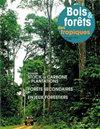斯里兰卡橡胶间作的农艺和社会经济选择:莫尼拉加拉和安帕拉地区的前瞻性分析
IF 0.6
4区 农林科学
Q3 FORESTRY
引用次数: 0
摘要
天然橡胶被斯里兰卡种植园部视为斯里兰卡发展的战略材料。为应对气候变化,该国采取了一项注重复原力和可持续发展的政策。正是在这种背景下,Ksapa于2022年启动了RIVER项目,旨在制定一个加强斯里兰卡农业能力的计划。为了实施该项目,该公司委托YAPI专家提供农艺性能良好且对生产者具有经济利益的橡胶树为基础的农林间作模式,以使其收入来源多样化。河流项目在斯里兰卡东南部的Moneragala和Ampara两个地区实施。本研究首先对文献进行了分析,以便选择可以间作橡胶的作物。与此同时,由YAPI专家准备的80个访谈由当地组织LOAM在实地进行。这些访谈的目的是确定已经在研究地区实施的橡胶间作模式,并了解农民采用这些模式的原因。访谈采用MCA和Chi²进行统计分析。结合文献综述,本研究建立了菠萝模型、可可模型、香蕉模型、百香果模型、刺果模型等5个可种植橡胶间作的模型,具有被当地农民采用的潜力。最后,建立了各模型的选择标准。它们的优点和缺点都被提出,因为一个有效的模型不能仅仅依靠农艺分析,而且必须使作物的选择适应当地市场和农民的需要。本文章由计算机程序翻译,如有差异,请以英文原文为准。
Agronomic and socio-economic options for rubber intercropping in Sri Lanka: a forward analysis in the Moneragala and Ampara regions
Natural rubber is considered a strategic material for the development of Sri Lanka by the Ministry for Plantations. In response to climate change, the country has adopted a policy focusing on resilience and sustainable development. It is in this context that Ksapa initiated the RIVER project in 2022, aiming to develop a program to strengthen agricultural capacity in Sri Lanka. To carry out this project, the company commissioned YAPI Expertise to provide agroforestry intercropping models based on rubber trees with good agronomic performance and economically of interest to producers to diversify their sources of income. The RIVER project is implemented in two districts in south-eastern Sri Lanka: Moneragala and Ampara. This study began with an analysis of the literature in order to select crops that could be intercropped with rubber. In parallel, 80 interviews, prepared by YAPI Expertise, were conducted in the field by a local organisation, LOAM. The aim of these interviews was to identify rubber intercrop models already implemented in the study areas and to understand the reasons why farmers adopted these models. The interviews were analysed statistically by MCA and Chi². By combining these with the literature review, the study established 5 models (Pineapple model, Cocoa model, Banana model, Passion fruit model, Soursop model) for several intercrops that could be planted with rubber, with potential for adoption by local farmers. Finally, selection criteria were established for each model. Both their strong and weak points are presented, since an effective model cannot rely on agronomic analysis alone and it will be essential to adapt the choice of crops to the local market and to farmers' needs.
求助全文
通过发布文献求助,成功后即可免费获取论文全文。
去求助
来源期刊

Bois et Forets Des Tropiques
FORESTRY-
CiteScore
1.50
自引率
16.70%
发文量
31
审稿时长
>12 weeks
期刊介绍:
In 1947, the former Tropical Forest Technical Centre (CTFT), now part of CIRAD, created the journal Bois et Forêts des Tropiques. Since then, it has disseminated knowledge and research results on forests in intertropical and Mediterranean regions to more than sixty countries. The articles, peer evaluated and reviewed, are short, synthetic and accessible to researchers, engineers, technicians, students and decision-makers. They present original, innovative research results, inventions or discoveries. The journal publishes in an international dimension. The topics covered are of general interest and are aimed at an informed international audience.
 求助内容:
求助内容: 应助结果提醒方式:
应助结果提醒方式:


